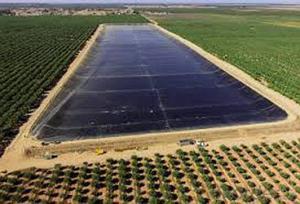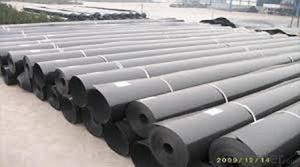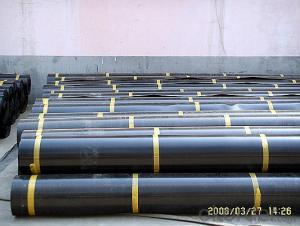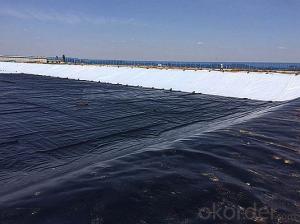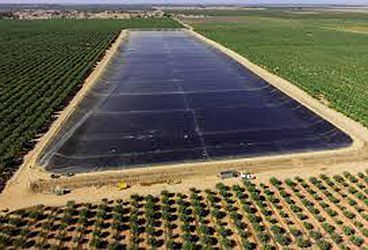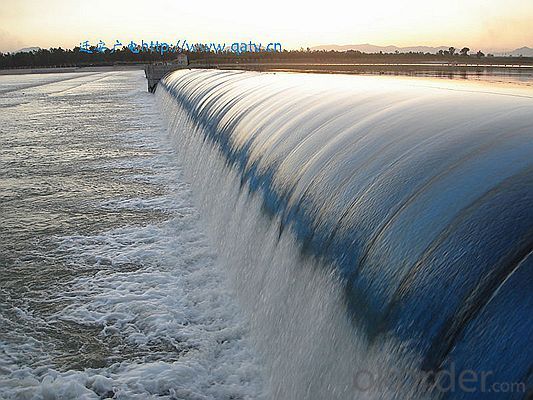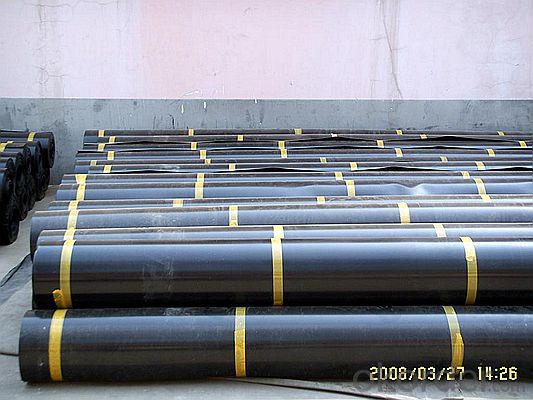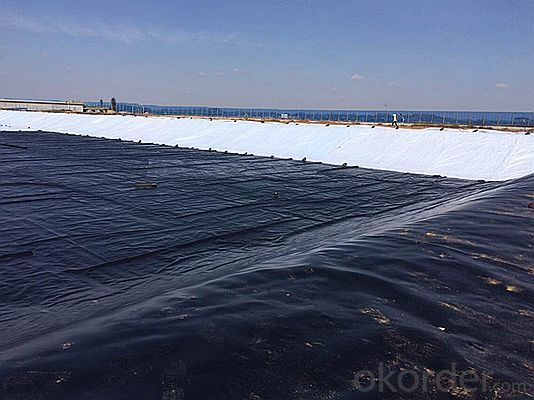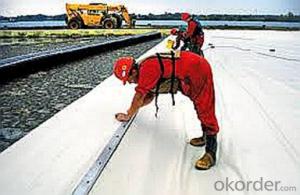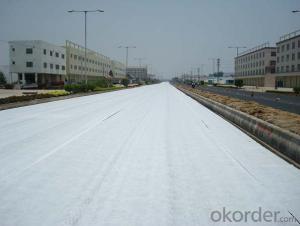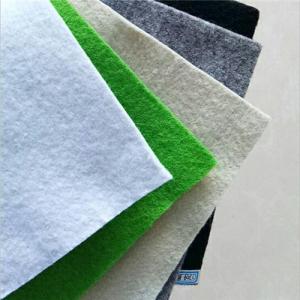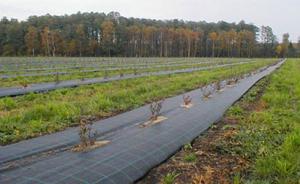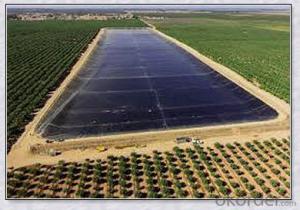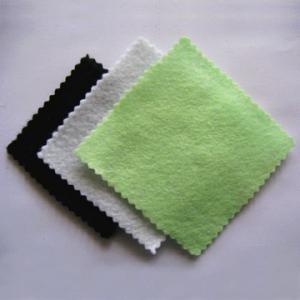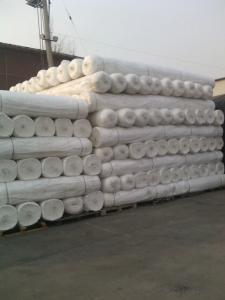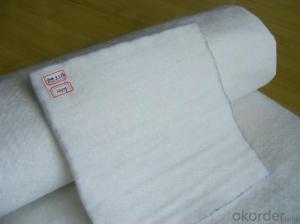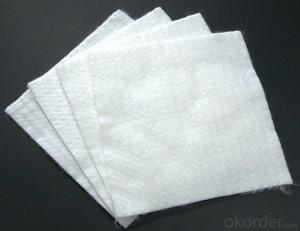Geotextile Non Woven Fabric Polyvinyl Chloride Low-Density Polyethylene Geomembrane
- Loading Port:
- China main port
- Payment Terms:
- TT OR LC
- Min Order Qty:
- 1000 m²
- Supply Capability:
- 1000000 m²/month
OKorder Service Pledge
OKorder Financial Service
You Might Also Like
Specification
Type:HDPE geomembrane
Material: High-density polyethyle
Thickness:0.1mm~3.0mm
Roll width:1m~8m Roll length:50m~100m
Color:Black or at your request
Density: 0.94g /cm3
Temperature range: -60oC -- +60oC
Life time: more than 50 years
Executive standard: GB/T 17643-2011
NO |
Item | Value | ||||||
| 0.75mm | 1.00mm | 1.25mm | 1.50mm | 2.00mm | 2.50mm | 3.00mm | ||
| 1 | Density (g/cm2) | 0.939 | ||||||
| 2 | Tensile propeties | |||||||
| Yield strength (N/mm) | 11 | 15 | 18 | 22 | 29 | 37 | 44 | |
| Break strength (N/mm) | 20 | 27 | 33 | 40 | 53 | 67 | 80 | |
| Yield elongation (%) | 12 | |||||||
| Break elongation (%) | ≥450 | |||||||
| 3 | Tear resistance (N) | 93 | 125 | 156 | 187 | 249 | 311 | 374 |
| 4 | Puncture resistance (N) | 240 | 320 | 400 | 480 | 640 | 800 | 960 |
| 5 | Stree crack tensistance (h) | ≥1500 | ||||||
| 6 | Carbon black | |||||||
| Carbon black content (%) | 2.0-3.0 | |||||||
| Carbon black dispersion | Carbon black dispersion (only near spherical agglomerates)fo r10 different | |||||||
| views 9 in categories 1 or 2 and 1 in category3 | ||||||||
| 7 | Oxidative induction time(OIT) | |||||||
| Standard OIT(min) | 100 | |||||||
| High pressure OIT(min) | 400 | |||||||
| 8 | Oven aging at 85°C | |||||||
| Standard OIT-% retained after 90 days (%) | 55 | |||||||
| High pressure OIT-% retained after 90 days (%) | 80 | |||||||
| 9 | UV Resistance | |||||||
| Standard OIT retained after 1600 hrs (%) | 50 | |||||||
| High pressure OITretained after 1600 hrs (%) | 50 | |||||||
| 10 | Low tempreture impact brittle property at -70°C | Pass | ||||||
| 11 | Premeability ( g.cm/(cm2).Pa) | ≤1.0×10-13 | ||||||
| 12 | Dimensional stability (%) | ±2 | ||||||

Packaging & Shipping
Packing: PLASTIC FILM INSIDE, AND WOVEN BAG OUTSIDE
Shipping: About 15 days after receipt the deposit
geotextile fabric
permeability,filtration,easy for construction
ISO and CE certificate
Good quality and competitive price
Our Service
Quality assurance
1.On a regular basis or as per your request,we entrust national testing agencies to conduct quality inspections
2. Strictly in accordance with the ISO9001-2008 international quality system standard,we monitor and manage the whole process throughout production,quality testing,and measurement to ensure product quality
3. For quality-related construction delay or substandard construction(except for damage or losses due to customer’s responsibility or irresistible natural disasters),we have refunding,replacement,and repair services.We will respond to customers’ feedbacks on quality issues within 24 hours.
FAQ:
Q: What kind of payments does jenor support?
A: T/T, L/C, Cash are accepted.
Q: Do you charge for the samples?
A: Accordeing to our company policy, the samples are free, we only charge the freight fee. And we will return the freight fee during the next order.
Q: Can you produce according to customers' design?
A: Sure, we are professional manufacturer, OEM and ODM are both welcome.
Q: Do you have other products?
A: Yes, please check the pictures:
- Q: What is the role of geosynthetics in the highway?
- Geosynthetics a lot of geogrid, geotextile which is specific
- Q: What is the role of permeability in geotextiles?
- The role of permeability in geotextiles is to allow the passage of water or other fluids while restraining the movement of soil particles. It helps in drainage and filtration processes, preventing the buildup of excess moisture and maintaining the stability and integrity of the surrounding soil or substrate.
- Q: What are the applications of geotextiles in geotechnical engineering?
- Geotextiles have various applications in geotechnical engineering, including soil stabilization, erosion control, drainage systems, and reinforcement of weak soils. They are commonly used in road construction, retaining walls, embankments, and landfills to improve the overall performance and durability of the structures. Geotextiles can also be used as a separation barrier between different soil layers or as a filter to prevent the migration of fine particles while allowing water to pass through. Overall, geotextiles play a crucial role in enhancing the geotechnical properties of soil and providing sustainable solutions to engineering challenges.
- Q: What are the key considerations for geotextile installation in high water flow areas?
- Some key considerations for geotextile installation in high water flow areas include selecting a geotextile material with a high flow rate to allow for effective water drainage, ensuring proper anchoring and securing of the geotextile to prevent displacement, conducting thorough site investigations and assessments to determine the appropriate installation method and design, and monitoring the performance of the geotextile over time to identify any maintenance or repair needs. Additionally, considering the environmental conditions and potential impact on the geotextile's durability is crucial in high water flow areas.
- Q: Can geotextiles be used in the construction of landfills?
- Yes, geotextiles can be used in the construction of landfills. Geotextiles serve as a barrier to prevent the mixing of different types of soil layers, provide separation between different materials, and enhance the stability and strength of the landfill structure. They also help in controlling erosion and drainage within the landfill site.
- Q: How are geotextiles affected by chemical exposure?
- Geotextiles can be negatively affected by chemical exposure, as certain chemicals can degrade the material and reduce its effectiveness. The specific impact will depend on the type and concentration of the chemical, as well as the composition and quality of the geotextile. Regular monitoring and selection of chemically resistant geotextiles can help mitigate the potential damage caused by chemical exposure.
- Q: What are the different geotextile installation techniques for erosion control blankets?
- There are several geotextile installation techniques for erosion control blankets, including trench and backfill, stake and tension, and anchor and pin. Trench and backfill involves digging a trench along the slope, placing the erosion control blanket in the trench, and then backfilling it with soil. Stake and tension involves driving stakes into the ground at regular intervals and then securing the erosion control blanket to the stakes with tensioning devices. Anchor and pin involves using anchors or pins to secure the erosion control blanket directly to the ground. The specific technique used depends on the slope conditions and project requirements.
- Q: Polyester short wire geotextile 300 grams of water ministry indicators
- Polyester short wire geotextile 300 grams of water ministry indicators and GB indicators are the same. Can be implemented in accordance with GB / T-2008 standards. 300g polyester short wire geotextile per unit area quality deviation required ± 7%. 300g polyester short wire geotextile thickness ≥ 2.4mm. 300g polyester short wire geotextile width deviation of ± 0.5%. 300g polyester short wire geotextile breaking strength ≥ 9.5KN / m. 300g polyester short wire geotextile elongation at 25% to 100%. 300g polyester short wire geotextile CBR burst strength ≥ 1.5KN. 300g polyester short wire geotextile equivalent pore size 0.07mm ~ 0.2mm. 300g polyester short wire geotextile vertical permeability coefficient (1.0 ~ 9.9) * (10 negative square ~ 10 negative three times). 300g polyester short wire geotextile tear strength ≥ 0.24KN.
- Q: Production of acupuncture carpets, geotextiles, warm flakes, paper blankets, air filter materials, the main raw material is what? why?
- The main raw material is polyester, polyester is the basic composition of polyethylene terephthalate, it is also known as polyester fiber (PET), the long chain of its chemical formula H (OCH2CCOCO) NOCH2CH2OH, the relative molecular weight is generally ~ The In fact, there are a small amount of monomer and oligomers present. These oligomers have a low degree of polymerization and are present in an annular form. Polyethylene terephthalate can be obtained by polycondensation of terephthalic acid (PTA) and ethylene glycol (EG) by direct esterification of ethylene terephthalate 9BHET. From the composition of polyester molecules, it is composed of short fatty hydrocarbon chain, ester, benzene ring, terminal alcohol hydroxyl group. Polyester molecules in addition to the existence of two hydroxyl groups, there is no other polar groups, and thus polyester fiber hydrophilic poor. Polyester molecules contain about 46% of the ester group, ester groups can be hydrolyzed at high temperatures, thermal cracking, the case of alkali is the saponification, the degree of polymerization reduced; polyester molecules also contain aliphatic hydrocarbon chain, it can make polyester molecules have a certain But because the polyester molecules can not rotate the benzene ring, so the polyester macromolecules are basically rigid molecules, molecular chains easy to maintain linear. Therefore, polyester macromolecules in this condition is easy to form crystals, so the polyester crystallinity and orientation is higher.
Send your message to us
Geotextile Non Woven Fabric Polyvinyl Chloride Low-Density Polyethylene Geomembrane
- Loading Port:
- China main port
- Payment Terms:
- TT OR LC
- Min Order Qty:
- 1000 m²
- Supply Capability:
- 1000000 m²/month
OKorder Service Pledge
OKorder Financial Service
Similar products
Hot products
Hot Searches
Related keywords
